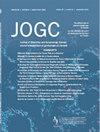评估大量子宫内膜异位症外科医生的子宫内膜异位症手术报告质量。
IF 2
Q2 OBSTETRICS & GYNECOLOGY
引用次数: 0
摘要
目的评估接受过研究员培训、工作量大的子宫内膜异位症外科医生所做子宫内膜异位症手术的手术报告质量:在这项回顾性审查中,由两名审查员对每位外科医生的 5 份连续的去标识化手术报告进行评估。根据记录的美国妇科腹腔镜医师协会(AAGL)分类系统的组成部分数量,对每份口述报告进行质量评分(0 至 28 分)。主要结果是可以确定子宫内膜异位症 AAGL 2021 分期的报告比例。次要结果包括口述质量评分中位数、可指定子宫内膜异位症生育指数(EFI)评分的保留生育力病例口述比例、单个质量评分组成部分,以及不同外科医生、机构和报告方法之间的质量评分差异:对安大略省 7 个地点 16 名外科医生的 82 份手术报告进行了审查。有48/82(59%)的病例可以确定AAGL分期,有31/45(69%)的保留生育力病例可以确定EFI评分。质量评分中位数为 57%(范围为 18%-86%)。只有 13% 的手术报告包含对残留疾病的评论。对于特定外科医生而言,不同报告之间的质量评分一致性较差(ICC = 0.22,95% CI 0.03-0.49)。不同外科医生(chi-square = 30.6,df = 16,P = .015)和不同机构(chi-square = 19.59,df = 7,P = .007)的质量得分差异很大。手术报告质量得分不因受训者或工作人员完成情况、模板使用情况、电话或打字完成情况而异:结论:子宫内膜异位症手术记录存在很大的差异性和不一致性。有必要对子宫内膜异位症手术的手术记录进行标准化,以加强沟通并最终改善患者护理。本文章由计算机程序翻译,如有差异,请以英文原文为准。
Evaluating the Quality of Endometriosis Operative Reports Among High-Volume Endometriosis Surgeons
Objectives
To evaluate the quality of operative reports for endometriosis surgeries performed by fellowship-trained, high-volume endometriosis surgeons.
Methods
In this retrospective review, 5 consecutive deidentified surgical reports per surgeon were evaluated by 2 reviewers. Each dictation was assigned a quality score (between 0 and 28), based on the number of components from the American Association of Gynecologic Laparoscopists (AAGL) classification system that were documented. The primary outcome was the proportion of reports for which the endometriosis AAGL 2021 stage could be assigned. Secondary outcomes included median dictation quality scores, proportion of dictations for fertility-preserving cases where the Endometriosis Fertility Index score could be assigned, individual quality score components, and quality score variation between surgeons, institutions, and reporting methods.
Results
Overall, 82 operative reports were reviewed from 16 surgeons across 7 sites in Ontario. The AAGL stage could be assigned in 48/82 (59%) of cases, and the Endometriosis Fertility Index score could be assigned in 31/45 of fertility-preserving cases (69%). The median quality score was 57% (range 18%–86%). Only 13% of operative reports included comments on residual disease. Quality score consistency between reports was poor for a given surgeon (intraclass correlation coefficient 0.22; 95% CI 0.03–0.49). Quality scores differed significantly between surgeons (χ2 = 30.6, df = 16, P = 0.015) and institutions (χ2 = 19.59, df = 7, P = 0.007). Operative report quality score did not differ based on completion by trainee or staff, template use, or whether the report was completed by telephone or typed.
Conclusions
There is significant variability and inconsistency in endometriosis surgery documentation. There is a need to standardize surgical documentation for endometriosis surgeries, enhancing communication and ultimately patient care.
求助全文
通过发布文献求助,成功后即可免费获取论文全文。
去求助
来源期刊

Journal of obstetrics and gynaecology Canada
OBSTETRICS & GYNECOLOGY-
CiteScore
3.30
自引率
5.60%
发文量
302
审稿时长
32 days
期刊介绍:
Journal of Obstetrics and Gynaecology Canada (JOGC) is Canada"s peer-reviewed journal of obstetrics, gynaecology, and women"s health. Each monthly issue contains original research articles, reviews, case reports, commentaries, and editorials on all aspects of reproductive health. JOGC is the original publication source of evidence-based clinical guidelines, committee opinions, and policy statements that derive from standing or ad hoc committees of the Society of Obstetricians and Gynaecologists of Canada. JOGC is included in the National Library of Medicine"s MEDLINE database, and abstracts from JOGC are accessible on PubMed.
 求助内容:
求助内容: 应助结果提醒方式:
应助结果提醒方式:


